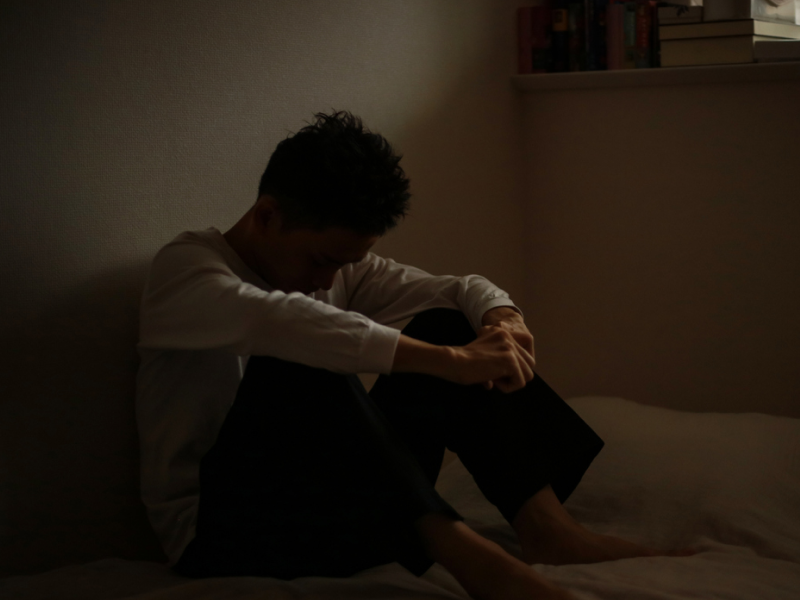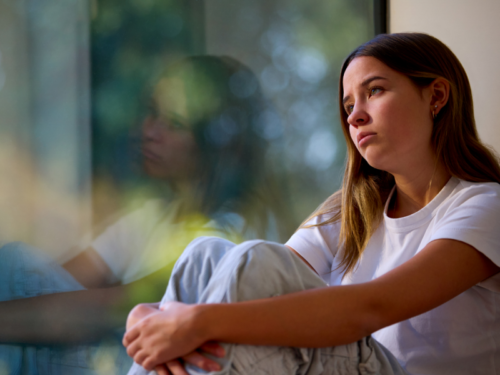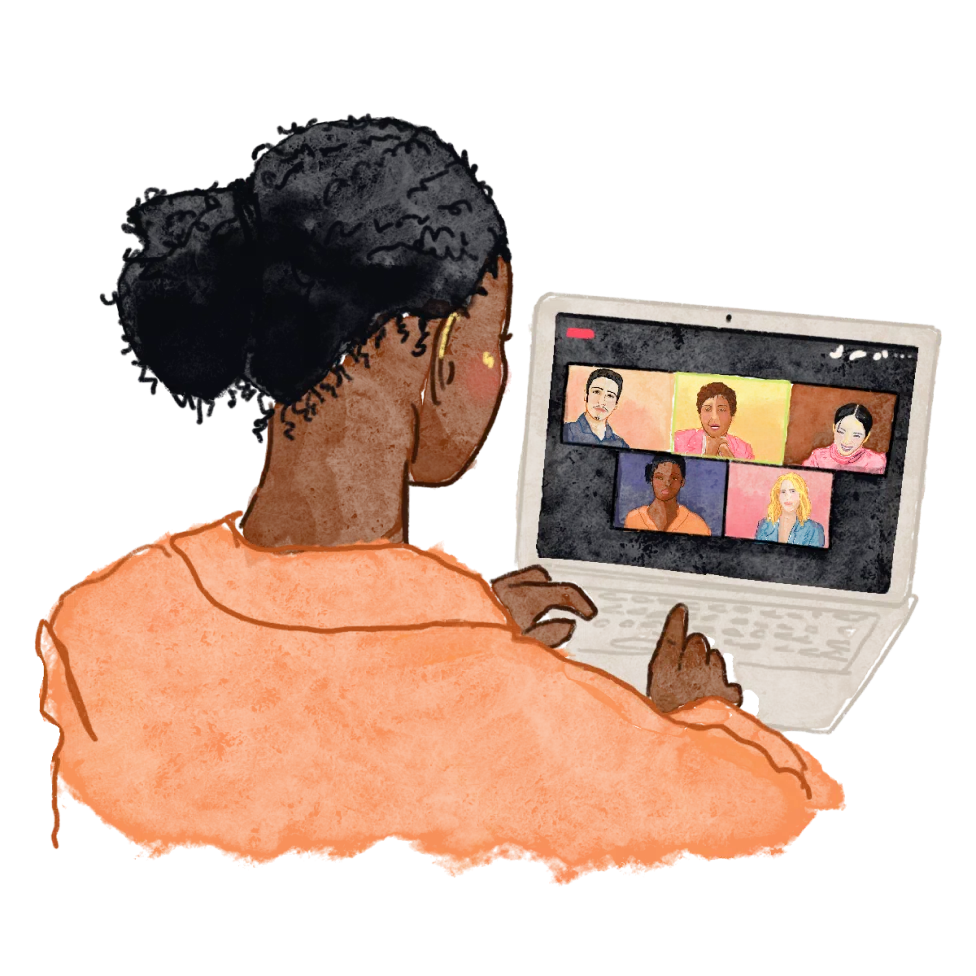
What is Greening Out? Recognizing and Preventing Cannabis Overdose
July 24, 2024
9 min.
Curious about what “greening out” means? We’ve got you covered. Learn all about what causes greening out, the symptoms, and how to prevent it from happening again.
By: Ashley Laderer
Clinically Reviewed By: Rebecca Holland
Table of Contents
If you’ve ever smoked weed (also called cannabis or marijuana) and then had the worst night of your life –– room spinning, mind spiraling with anxiety, heart rate through the roof, wondering if you’re about to die, and so on –– you’ve experienced greening out.
Although many people associate marijuana use with relaxation and the giggles, this substance can certainly backfire and cause a slew of unfun symptoms –– especially if you have a low tolerance, don’t know your limits, or take too much. Here’s what you need to know about greening out, how to prevent it, and how to help someone who is actively greening out.

We can help you develop a healthy relationship with weed
Virtual intensive therapy to manage serious mental health conditions.
What is greening out?
“Greening out is the term for marijuana overuse and overdose,” says Sarah Lyter, a Senior Primary Therapist with Charlie Health. She says the term comes from a combination of the cannabis plant being green and the symptom of nausea or “feeling green.”
It’s important to note that a cannabis overdose, unlike other forms of overdose, is extremely unlikely to be fatal. According to the United States Drug Enforcement Administration, there have been no reported deaths due to marijuana overdose alone. Still, while not fatal, a marijuana overdose can be extremely uncomfortable and distressing.
Essentially, what happens is the THC overwhelms the endocannabinoid system, which causes an imbalance with your neurotransmitters, or chemical messengers, in the body, says Lyter. This creates those unpleasant green-out symptoms. In essence, you got way too high, and your body and brain can’t handle it.
Recognizing the symptoms of greening out
It’s important to be aware of the signs of greening out so you can identify the phenomenon and act accordingly if it’s happening to you or a friend.
Lyter says common symptoms of greening out include:
- Lightheadedness
- Dizziness
- Nausea
- Headache
- Increased sweating
- Fast heart rate
- Elevated blood pressure
- Anxiety
- Panic attacks
- Confusion
- Hallucinations
- Psychosis
These symptoms can be severe and feel really scary to the person experiencing the green out.
How long does greening out last?
Most of these green out symptoms will pass within a few hours. They may last longer if you’ve taken an edible rather than smoked. It’s different for everyone. However, it’s possible for drug-induced psychosis to last long-term, Lyter says.
What are the causes of greening out
There are various causes of greening out. Sometimes, multiple factors can come into play at once. Here are five potential causes:
1. Low tolerance
If you’re new to consuming cannabis, you may have a very low tolerance for the drug, meaning even a little bit of weed can affect you in a big way. This is why inexperienced consumers may be at higher risk of greening out. “If you’re not a very experienced user, you probably can’t smoke as much as the person next to you who’s been smoking for years,” Lyter says. It can be easy to overdo it and push past your limit accidentally.
2. Too high of a dose/too potent
This can happen if you don’t have a legitimate, legal cannabis source. If you’re getting weed from someone random, you have no idea the THC concentration or potency. CDC data shows that cannabis potency has been increasing in recent years. Or, if you’re taking edibles, you also don’t know the dose you’re consuming. This can easily lead to you taking a much higher, or much more potent, dose than you realize.
3. General overconsumption
Whether you have no idea how much you’re consuming or you do know how much you’re consuming and choose to keep going because you want to get higher and higher, overconsumption can certainly lead to less-than-ideal results.
4. Taking edibles
If you take an edible, you might be at higher risk of greening out, especially if you don’t know the dose. Regardless, Lyter says multiple factors go into how you process an edible because it has to go through your digestive system. Plus, the effects of edibles typically last much longer than the effects of smoking, which could lead to longer unpleasant symptoms, she adds.
5. Mixing with other substances
If you mix weed with other substances, including nicotine, caffeine, or alcohol, you may be more likely to green out, says Lyter. This could increase the risk of physical symptoms like a racing heart or mental symptoms like intense anxiety.
Also, mixing weed with mental health medications may also pose a threat of greening out. Cannabinoids can result in significantly disrupted levels of mental health medications, metabolism of the cannabinoids themselves based on what medications someone is on, and the enzymes involved in their metabolism, all of which may make the chances of greening out higher.
Prevention strategies for greening out
Harm reduction is key here. There are many actions you can take to consume cannabis in a more safe, responsible way to prevent greening out. Here are seven harm reduction and prevention strategies:
1. Use in moderation
Be mindful of your cannabis consumption and keep track of how much you’re ingesting. Especially with edibles, remember the catchphrase, “Start low and go slow.” Regardless of your method of ingestion, use small doses and pace yourself. “You can always use more, but you can never use less,” Lyter says.
2. Buy from a safe source
Always get your weed from a safe, legal source, like a dispensary. This way, you know that it is safe, tested, and not laced. “Getting stuff from strangers or friends of friends of friends is never a good idea because you have no idea what’s in it,” Lyter says. Plus, you can ask to see labels listing potency information, like THC concentration.
3. Don’t mix with other substances
You can completely eliminate one green out risk factor if you avoid mixing weed with other substances. Keep in mind that caffeine and nicotine are both stimulants that raise your heart rate and blood pressure, which could worsen related green out symptoms, Lyter says. Avoid smoking blunts and splifs, since these are rolled with cannabis and tobacco, which contains nicotine.
4. Stick to the strains/products you know
Although you might be tempted to test out all the weed products out there, it’s a safer bet to stick to the products you know. Lyter advises sticking to the weed strains or products that you’re used to.
5. Avoid edibles
Especially if you aren’t an experienced user, it may be best to avoid edibles altogether. The way an edible hit is often more unpredictable than smoking. Plus, the effects of edibles last much longer.
6. Stay hydrated
If you’re dehydrated, your body’s a bit dysregulated, and you may be more likely to have symptoms such as a rapid heart rate, Lyter says. Make sure you stay hydrated before and during cannabis consumption.
7. Consume in a safe environment
If you tend to get anxious when smoking weed, being in a safe environment can help you feel more comfortable and at ease. “Then, if you do green out, you’re going to be in a much safer situation than if you’re out in public or at a party,” says Lyter.
How do you help someone greening out?
If you’re with someone who’s greening out, or if you’re greening out yourself, try to stay calm. Here are four tips that can help.
1. Get to a safe environment
If you’re at a party, you can move to a quieter room with fewer people. You want to reduce the stimulation around you, Lyter says. Or, if you’re at home, it might be more comfortable to move to the bedroom so you can lie down. Other people may prefer to step outside and get some fresh air. Whatever feels most comfortable for you or your friend is the right move.
2. Practice relaxation techniques
If you’re feeling a lot of anxiety or panic, and your heart is racing, you want to try to bring down that heart rate. You can do this by using relaxation techniques such as breathing exercises. Lyter recommends paced breathing, which is when you breathe slowly and deeply, exhaling for longer than you inhale. You can try breathing in through your nose for four seconds and exhaling slowly out through your mouth for six seconds. Or, you can opt for other self-soothing techniques like smelling a relaxing scented candle or getting cozy in a fuzzy blanket.
3. Drink and eat
Lyter says drinking water can help alleviate some of the physical symptoms, and eating something can stabilize your blood sugar, which can also help with physical green out systems. If you’re nauseous, try having some ice water or ginger ale with something easy on the stomach, like crackers.
4. Remember, this will pass
This is easier said than done when you’re in the moment freaking out. But it’s important to remember that nobody has died from weed –– you’re simply too high, and it’s going to subside eventually. You’re going to be okay. Just learn from this experience.
When to seek professional help for greening out
There are a couple of instances where you should reach out to a doctor to ensure safety. The first cause for concern is if you’re dealing with an extremely elevated heart rate or blood pressure. If your heart rate and blood pressure are extremely high and won’t go down despite your best efforts, you should see a doctor to be on the safe side, Lyter says.
Secondly, if you or your friend are experiencing psychosis, such as hallucinations, it’s best to seek medical attention to get those symptoms decreased as quickly and easily as possible to reduce the chance of developing long-term drug-induced psychosis.
What is cannabis use disorder?
It’s estimated that around 10% of people who smoke weed will develop an addiction. This is known as cannabis use disorder. Cannabis use disorder happens when consuming cannabis interferes with your life in a big way. It’s much more than just enjoying weed here and there –– it’s when you find yourself needing to use more to get the same effect, struggling to cut down even if you want to, or letting important things in your life slide because of your weed consumption. Or, you might find that you’re frequently overconsuming and even greening out often because you’re consuming way too much weed.
If you notice that you’re always putting weed first, feeling irritable and anxious when you don’t have weed, or just can’t seem to stop smoking cannabis, it might be time to talk to a professional about it. There are many addiction treatment programs for substance use disorders that you can choose from, ranging from a residential treatment program to an intensive outpatient program to outpatient programming. Various treatments, such as cognitive behavioral therapy (CBT) and group therapy, can be a big help for recovering from marijuana abuse/addiction.

How Charlie Health can help with cannabis addiction
If you or a loved one is struggling with cannabis use disorder or cannabis addiction, Charlie Health is here to help. Charlie Health’s virtual Intensive Outpatient Program (IOP) provides more than once-weekly mental health treatment for teens, young adults, and families dealing with complex mental health conditions, including substance use disorders and co-occurring mental health conditions. Our compassionate clinicians meet you where you are on your recovery journey and create personalized treatment plans to help you heal. We incorporate evidence-based therapies into individual counseling, family therapy, and group sessions. With this kind of holistic treatment, managing your mental health is possible. Fill out the form below or give us a call to start healing today.





